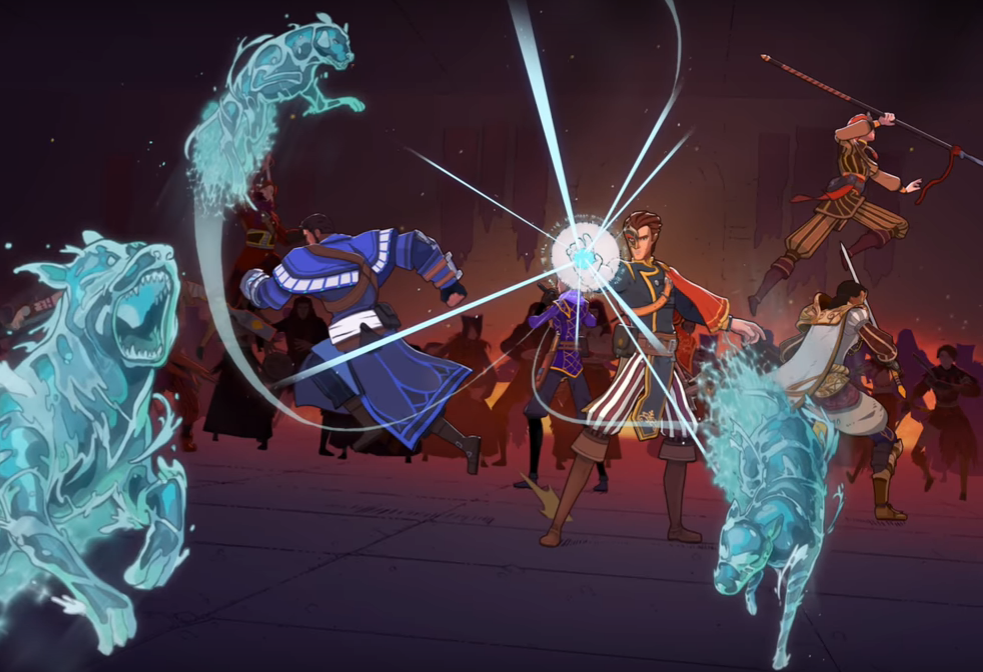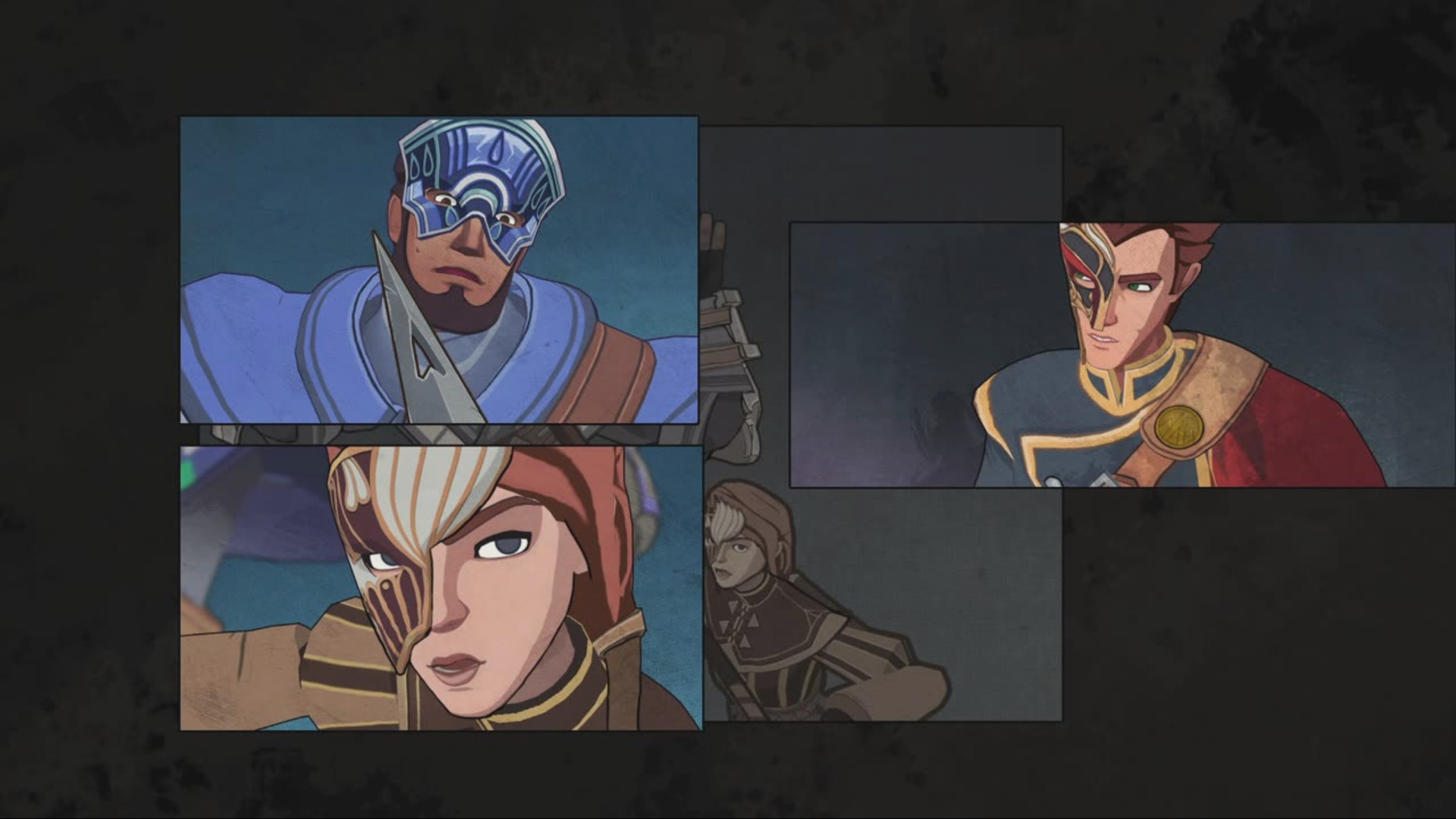In Masquerada: Songs and Shadows, developer Witching Hour Studios takes known concepts from tactical RPGs and executes them beautifully. From memorable characters and extensive lore to impactful skills and a well-designed combo system, this game has a lot to offer its players.
Let’s take a look at what makes this new indie adventure a must-play game for RPG fans who want a competent tactical experience.
Masquerada vs. Contadani: Story and Setting
Masquerada: Songs and Shadows is set in a fantasy city inspired by Renaissance-era Venice. Its society is divided by access to powerful magic artifacts called Mascherines — objects that look like Venetian masks and allow their wearers to access elemental magic based on their personal affinities. No one knows how to create Mascherines, so they are limited in number — creating a division between those who can access them and those who cannot.
The noble Masquerada rule the city, organizing into guilds that are all loosely affiliated with the central government. In recent years, a force of rebels called the Maskrunners have been fighting to bring the magic of Mascherines to the commoners — the Contadani. This war has further reduced the number of Mascherines, because the masks vanish forever if worn at the time of death.
In the middle of this mess of political intrigue and outright rebellion, a government official has gone missing. Players step into the shoes of an expert investigator who has been recalled from exile to solve the case — and who has a very personal connection to the missing official and the ongoing war. Along the way, numerous other characters with distinct motivations and unique personalities join the party to help you solve the case and explore the mysteries you’ll uncover along the way.
While the story starts out a little heavy-handed with political commentary on the nature of power and the role of government (especially in the tutorial), it quickly mixes in a good balance of ancient mysteries and more personal stories about your party members. The story is presented using fully voiced dialogue between party members and NPCs, with graphic novel panels taking the place of cutscenes.
Masquerada strikes a delicate balance as it unfolds, and the mix of the elements works so well that it made me prone to longer play sessions — the kind were “just twenty more minutes” became four hours before I knew it.
Background lore is optional. The game won’t hammer you over the head with it, but you can delve deeper into it if you want to. Tidbits of lore are placed around the game world as collectibles, taking the form of reflective journal entries from the perspective of the main character.
The lore that I collected while playing the game was interesting, but players should be aware that the journal entries are not voiced. There is a lot of text to read if you want to, but it is also not necessary to complete the game — an effective middle ground that should satisfy most players.
Combat and Combos
Masquerada uses tactical real-time combat, but it does allow players to pause in order to issue commands. So if you need some time to think and strategize, the game will happily let you do that.
Each character in the party has up to four active skills and one passive. Skills have a wide range of effects — examples include healing orbs of water, knocking back enemies with gusts of wind, throwing bolts of flame, and even sinking into the ground to recover and reposition invisibly. These skills are complemented by ultimate abilities that are tied to currently equipped Mascherines. These abilities are often enough to turn around a losing battle — with effects such as stunning all enemies in a wide radius for several seconds, or giving all party members 50% damage resistance.
Characters that join the party tend to start with masks that will help fill a specific role — tank, DPS, or healing.
The skills in Masquerada are accompanied by a class system that partially determines the upgrades available for the skills of a given character. The classes largely define how a character will regenerate focus — a sort of second health bar that protects against damage from the front. Focus makes positioning extremely important to combat. So characters with a tank class will often regenerate focus using AoE skills that generate a high threat, while DPS classes will often get focus from single-target skills or auto-attacks.
Combos add an extra layer of complexity to battles in Masquerada with elemental tags. Certain skills, often AoE, apply a tag of their given element to enemies that are hit by the skill. Players can improve their party by upgrading skills to either have greater synergy with elemental tags of their own type, or by upgrading them to have greater effects when hitting an enemy tagged by a different element. This opens up a lot of options — particularly because the skills on any character can be reset from the party’s base of operations at a tavern in the city.
Combat does reveal one of the game’s few rough edges — the party AI. Although players can customize or turn off the actions AI party members will take during combat, it is common to find the AI attacking enemies from the front. The AI does not make effective use of movement skills to flank enemies, and seems to miss most opportunities to take advantage of elemental tags. This means that the party is often dealing much less damage than it could be.
These problems are easily worked around by pausing the game to issue commands, but doing so makes fights take much longer. This AI problem is far from a deal-breaker, though, as combat is still very enjoyable. It simply makes battles a little more tedious than they need to be.
Graphics and Music
The environments in Masquerada are hand drawn in a style the developers say was inspired by French comic book artists. The stylized character models blend with these environments fairly well. Visually, the game is impressive and will look great on anything from basic laptops to the most powerful gaming PCs. The UI also scales well for larger screens, allowing console players to enjoy the game from the comfort of the couch.
The music is somewhat less memorable than the art, though. Masquerada features an original soundtrack of classical songs that sound great in-game. The problem is that soundtrack appears to contain too few songs. They repeat often enough that it can become frustrating — especially in sequences where the party is in and out of combat. The combat song is the same throughout the game, and these sequences force the player to hear only the beginning section of the track multiple times in a row. The title screen also has a song that does not fit at all with the rest of the music in the game.
That being said, I found the music to generally fit well with the story and the setting.
Conclusion
If you like RPGs, you should definitely play Masquerada: Songs and Shadows. It is not a new type of game, but a tactical RPG that blends modern art and ideas with classic gameplay elements which date back to the earliest cRPGs.
There is a lot of text to read, the AI is pretty bad at times, and every once in awhile the music repeats itself a bit too much. But even with these bumps, Masquerada does an excellent job at being a great entry in the genre — thanks to its beautiful art, memorable characters, and engaging story.










Published: Aug 26, 2017 05:22 pm